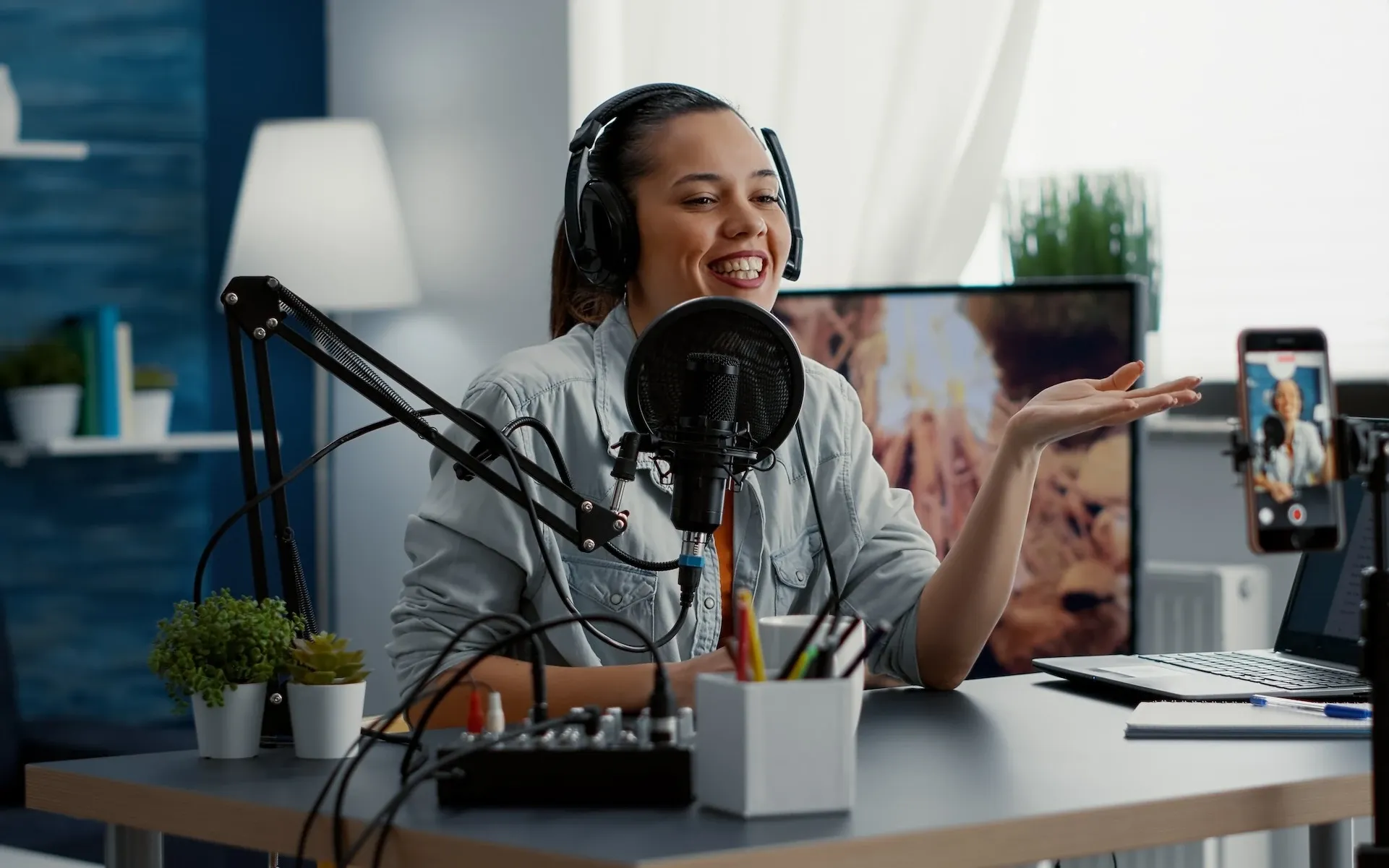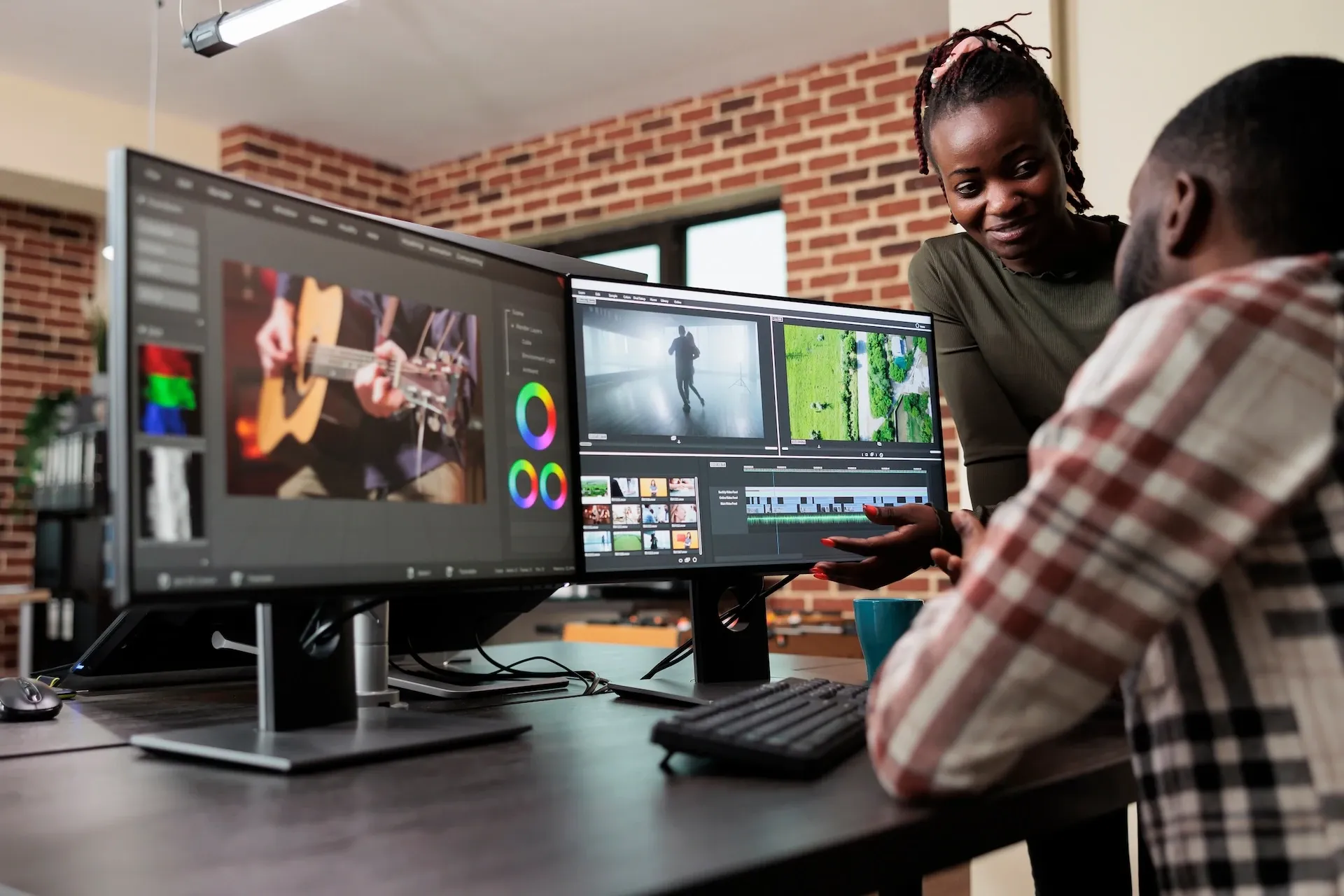YouTube vs. Vimeo: Which is best?
YouTube vs. Vimeo — which is best? Let’s dig into the benefits of each.

YouTube and Vimeo are titans of the video-sharing world, but which platform is best for your content?
We’ll dig into an extensive checklist today, covering:
- What’s the difference between YouTube and Vimeo?
- YouTube vs. Vimeo: Video storage
- YouTube vs. Vimeo: Video length
- YouTube vs. Vimeo: Compression and quality
- YouTube vs. Vimeo: Video privacy
- YouTube vs. Vimeo: Embedding videos
- YouTube vs. Vimeo: Video editing
- YouTube vs. Vimeo: Video updates
- YouTube vs. Vimeo: Live streaming
- YouTube vs. Vimeo: Monetization
- YouTube vs. Vimeo: Analytics
- YouTube vs. Vimeo: SEO
- YouTube vs. Vimeo: Branding
- YouTube vs. Vimeo: Pricing
- YouTube vs. Vimeo: Support
- YouTube vs. Vimeo: Reach
- Can you publish Vimeo videos on YouTube?
- Does Vimeo copyright content like YouTube?
- So, which is best: YouTube or Vimeo?

What’s the difference between YouTube and Vimeo?
YouTube debuted in 2005, but Vimeo’s the OG — it launched in 2004. Both are dedicated video platforms, but with different audiences. YouTube’s crowd is bigger and broader, while Vimeo’s is a more dedicated, professional base of creatives.
The platforms diverge on a number of factors, including monetization, video privacy, video editing, and a whole bunch more. Let’s run through all of that now.
YouTube vs. Vimeo: Video storage
YouTube provides unlimited video storage, while Vimeo caps free storage to 500 MB per week. If you’re signed up for a Vimeo Enterprise plan, the weekly video storage limit is lifted, with a total storage limit of 7 TB.
YouTube vs. Vimeo: Video length
Vimeo allows videos up to two hours in length when uploaded via desktop, or ten minutes via mobile. YouTube caps its video length at fifteen minutes for regular users, or twelve hours for verified accounts.

YouTube vs. Vimeo: Compression and quality
Both YouTube and Vimeo support and play 8K video, claiming to do so with minimal compression. Naturally, a viewer’s experience will depend on their circumstances: their bandwidth, their device’s memory and performance capabilities. As a result, there’s no cut-and-dry winner here — it largely depends on the user.
It’s worth noting, though, that while Vimeo and YouTube both host HDR video, only Vimeo offers Dolby Vision. Vimeo also has the advantage in the audio stakes — it offers 320 kbps playback, compared to YouTube’s standard of 128 or 256 kbps, the latter for Premium users.
On the other hand, Vimeo’s 8K video service is only available to paying users, whereas any YouTube account can upload 8K video.

YouTube vs. Vimeo: Video privacy
Vimeo snags the win here. Its privacy settings are more advanced, including password-protected playback for confidential or highly sensitive projects. Compared to YouTube’s three options of public, private, and unlisted, there’s little competition.
YouTube vs. Vimeo: Embedding videos
Vimeo gives users more control when embedding videos. You can decide which videos should display after the current piece of content, limit where said video is available, and even decide which buttons should display on the screen.
While YouTube does allow in-video info cards, most video recommendations come via the YouTube algorithm. This might be good for viewers, but creators have limited control over what’s shown.

YouTube vs. Vimeo: Video editing
Both YouTube and Vimeo have dedicated, in-app video editing functions. The former’s YouTube Studio performs a limited set of commands, such as cropping, trimming, and adding subtitles to your clips. You can also use the YouTube Create app to edit video via mobile, in a similar fashion to CapCut or KineMaster. However, if you’d like to deliver a more complicated desktop edit, you’re best using a pro-level software like Adobe Premiere Pro.
Vimeo’s desktop editor offers more range than YouTube Studio, but paywalls some of its advanced features behind the appropriately-named Advanced plan. Those extra bells and whistles include AI-generated chapters and text summaries, a script generator, bespoke brand tools, and more. You can also add time-coded notes and comments within Vimeo content — perfect for sharing with clients and team members.
Nothing beats getting stuck into a project with a dedicated video editing software, though. They’ll usually provide more customization, storage, and export options.
Speaking of: if you need music for your edit, we’ve got you covered. Check out Epidemic Sound’s catalog of more than 50,000 tracks and 200,000 unique sound effects and variations below.

YouTube vs. Vimeo: Video updates
We’ve all done it. The YouTube video’s gone live, it’s pulling in strong numbers, but then you realize there’s a mistake. It could be a funky edit, an incorrect stat — whatever it is, it shouldn’t be there, and you’ll need to do a fresh upload to make it right.
Vimeo is preferred in these situations, as you can update content without losing the stats or the URL. Plus, all of your previous versions are saved for peace of mind.
YouTube vs. Vimeo: Live streaming
Both platforms support live streaming, but YouTube Live is always free — Vimeo’s live package is tucked under its paid-for plans. While YouTube Live is more accessible, Vimeo’s live tool lets you upload a higher-quality version of the stream after it’s played. This means you can iron out any creases like poor audio, image blips, and noticeable lag.

YouTube vs. Vimeo: Monetization
YouTube monetization is big business. As shown in Epidemic Sound’s own research, it’s the top social media platform for generating income — there’s a reason the most-subscribed and -viewed YouTube channels are so competitive!
YouTube’s ad-supported monetization model offers creators 55% of total revenue. When you consider extra income streams like YouTube Premium, the platform is a fairly generous money-spinner.
Vimeo, on the other hand, doesn’t support advertising. This makes for a smoother user experience, but it doesn’t look so peachy when it comes to monetization — the only way to make money on Vimeo is with premium subscriptions. This limits the opportunity to generate passive income, and means users can’t financially benefit from viral video views as they would on YouTube.
You can monetize content with Vimeo’s direct-to-consumer streaming service, Vimeo OTT, but that strays away from the main Vimeo app.

YouTube vs. Vimeo: Analytics
YouTube Analytics is a free tool, and there’s no real barrier to entry. The stats are detailed, too, so you can dip your toe as deep as you’d like. Vimeo’s full analytics suite is paywalled, offering a few basic stats to free users.
YouTube vs. Vimeo: SEO
Search engine optimization, or SEO, is an organic process in which you create and edit content to rank higher in search engines like Google, Yahoo, and Bing. Given that Google is the big dog and owns YouTube, it generally prioritizes video search results coming from there.
That’s not to say that Vimeo content can’t rank highly on Google, but as a general rule, it’ll be easier to rank using YouTube. If you’d like to learn more about YouTube SEO, click here.
YouTube vs. Vimeo: Branding
YouTube has bare-bones branding materials, including a header image, info cards, and a few other pieces here and there. Vimeo is much more customizable, even letting you create your own branded player logo.

YouTube vs. Vimeo: Pricing
YouTube is free to use, no matter how big or small your channel may be. Vimeo’s free plan is limited in scope, with tiered plans ballooning up to $65 per month — this climbs even higher if you need a bespoke Enterprise plan.
YouTube vs. Vimeo: Support
Both YouTube and Vimeo have dedicated support centers, but Vimeo’s is much more robust. It’s 24/7 via email, with some Enterprise plans boasting an all-day phone support line. YouTube’s support usually gets the job done, but it’s based in the Help Community archive, rather than a dedicated, one-to-one service like Vimeo.
YouTube vs. Vimeo: Reach
YouTube’s reach is unparalleled in the video-hosting arena — it’s the second-most-visited website in the world, beaten only by Google. It has more than 2.4 billion active monthly users, who gobble up more than 1 billion hours of content every day. More than a quarter of the world’s population use YouTube at least once a month, and that’s only counting logged-in users.
Vimeo still has an impressive 230 million registered users, but not all of them log in to the platform every month. It also reports an average of 715 million monthly views — that’s not to be sniffed at, but it’s a drop in the water compared to YouTube’s 5 billion daily views.

When we’re talking YouTube vs. Vimeo for reach, there’s no contest. YouTube is the go-to platform for video, whether your audience is casually watching on mobile or doing some deep-dive customer research.
Vimeo has its advantages, but reach isn’t one of them. It’s a more carefully curated platform, which can be an advantage — if you’re targeting a super-specific audience, you might have more success with a tight-knit Vimeo community than with YouTube’s unthinkably large viewership.
Can you publish Vimeo videos on YouTube?
If you’d like to publish one of your Vimeo videos directly to YouTube, you can do so with Vimeo’s handy ‘Publish to social’ button. Connect your YouTube account to Vimeo if you haven’t done so already, and you’re good to go.
While ‘Publish to social’ is convenient, it doesn’t offer the same level of personalization as publishing natively on YouTube. For that reason, we’d suggest grabbing the exported video file you previously uploaded to Vimeo, then uploading it to YouTube from scratch.

Does Vimeo copyright content like YouTube?
YouTube’s Content ID protects copyrighted material, and is one of the platform’s unique selling points. Vimeo doesn’t have a similar function, but it does encourage users to follow copyright law.
Vimeo and YouTube both allow rights-holders to pursue DMCA takedown notices, emphasizing the importance of copyright compliance.
So, which is best: YouTube or Vimeo?
While both platforms have their merits, YouTube is more accessible and scalable than Vimeo. It’s free, provides a bedrock for monetization, and takes a user-friendly approach to analytics — all of these features are free, rather than Vimeo’s majority-paywalled suite. However, if you’re after a super-specific look in terms of branding, or want to enjoy the fruits of an advanced support center, Vimeo may suit your needs.
One thing they do have in common, though, is their attitude to copyright. As we mentioned above, both platforms strive to defend copyrighted material — you’ll have likely heard of videos being muted and removed for breaching usage agreements. Don’t let that happen to your content. Use Epidemic Sound.
Our catalog is high-quality, affordable, and safe. An Epidemic Sound subscription goes beyond royalty-free music, removing the headache of licensing and freeing you up to do what you do best. You can enjoy the safety of our license hand-in-hand with our massive catalog of 50,000 tracks, covering just about every genre you can think of. You’ll also gain unlimited access to our advanced search functions — finding the right sound’s never been easier.
It’s better than royalty-free. It’s worry-free. Get started with Epidemic Sound below.

Related posts:

